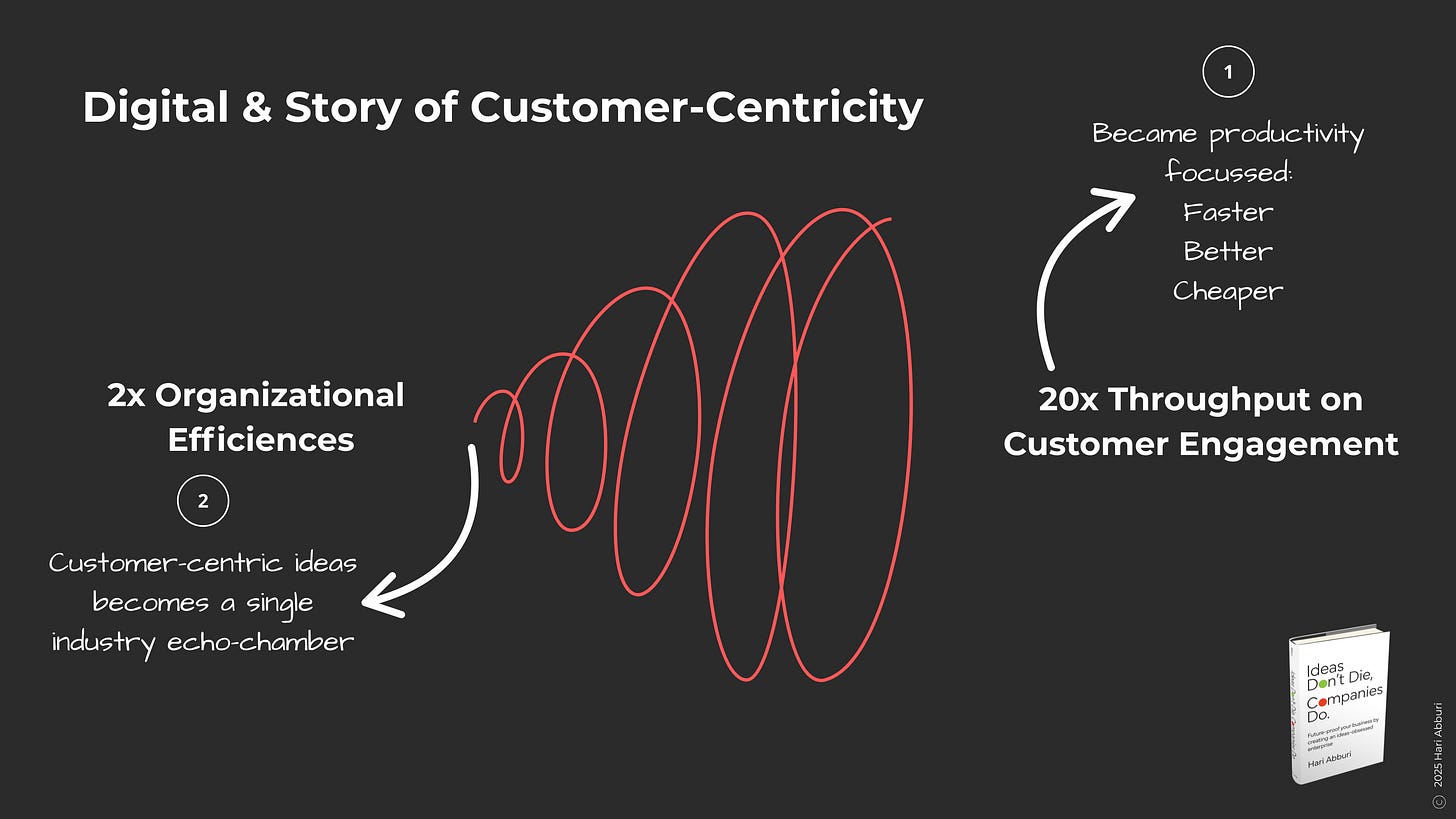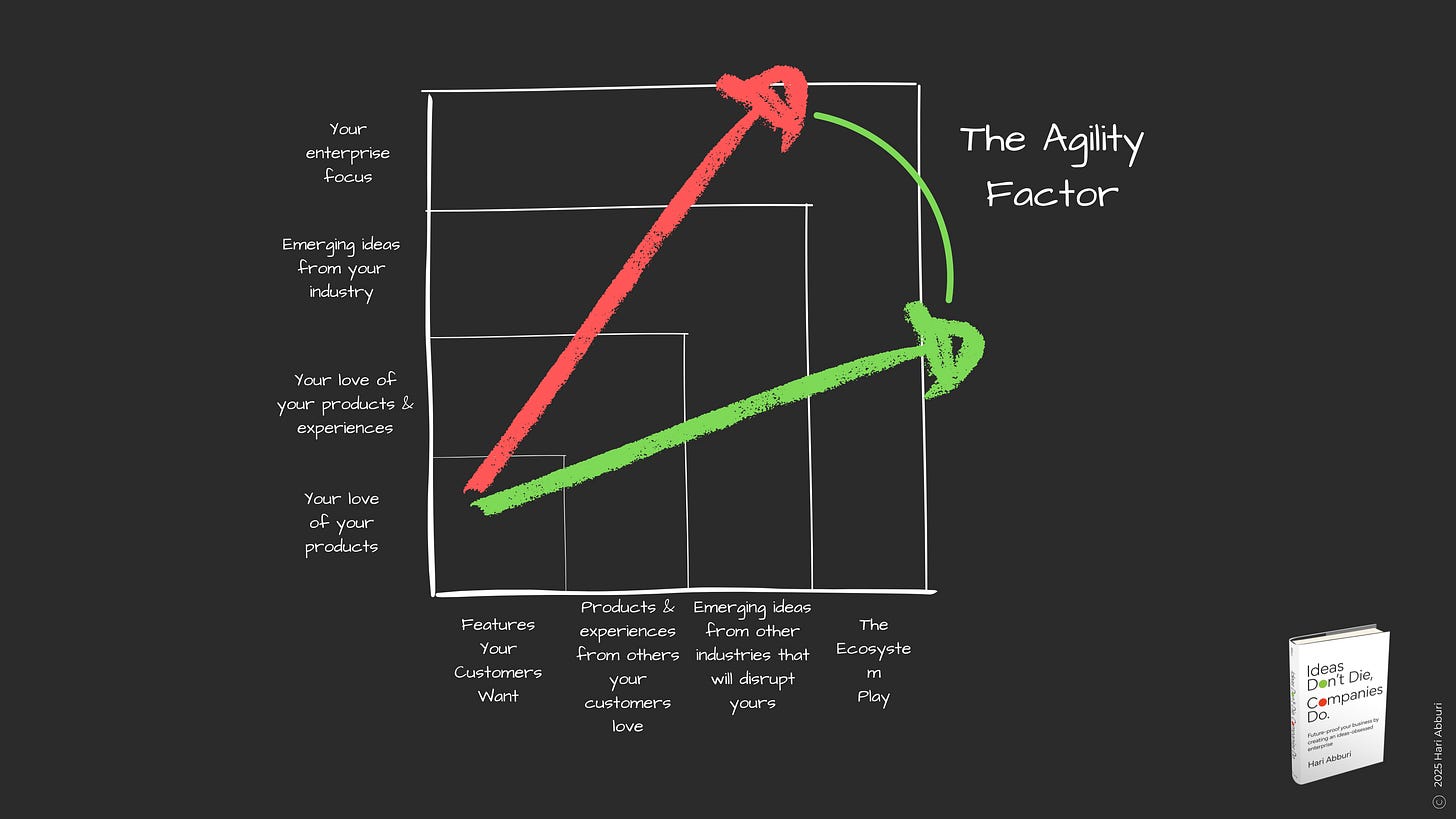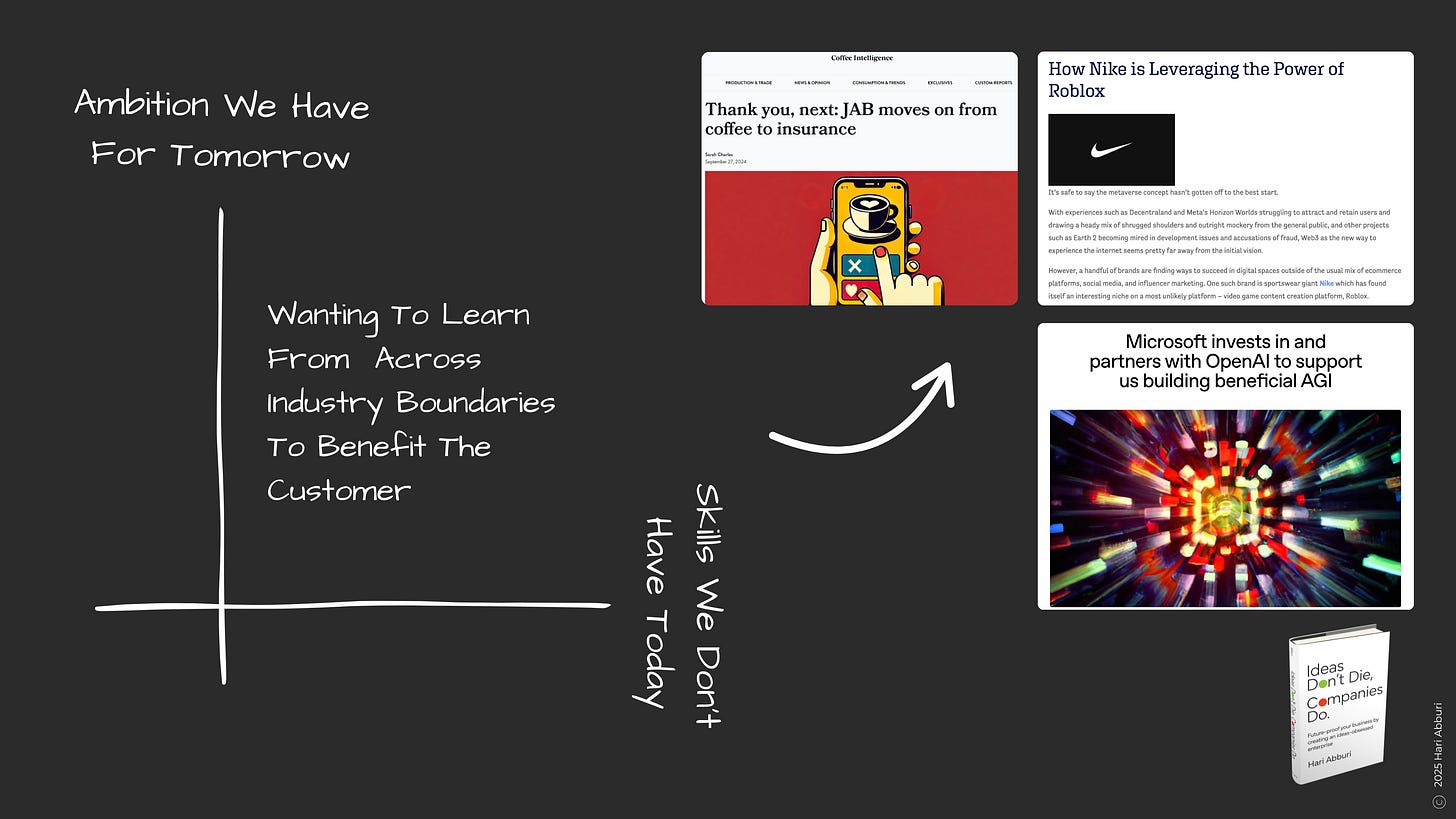How 'Customer-First' Kills Innovation & Why 'Ideas-Centricity' Isn't About What You Love
Four Idea-Provoking Clips on Ideas Don't Die, Companies Do.
I recently spoke at The Fast Future Blur Summit 2025 on October 10th at UCLA. This summit is the annual gathering of the faculty of The Fast Future Executive to showcase interconnections shaping the future of our world.
This talk showcased my recently published book, Ideas Don’t Die, Companies Do. - a call for leaders to become obsessed and create ideas-centric enterprises.
I believe in the age of AI, ideas are the real competitive advantage for an enterprise.
I invite you to watch these four two-minute clips and get into moving yourself and your company from being ‘at the speed of the customer’ to ‘at the speed of an idea’
1. What if “customer-first” killed innovation?
I argue that today’s organizations need “ideas-obsessed leaders” who build “ideas-obsessed enterprises.” While the digital era has revolutionized customer experience, it has largely failed employees and stifled innovation. Companies chasing relentless customer centricity—prioritizing “faster, better, cheaper”—have optimized efficiency but lost creativity. The result? Giants like Toys “R” Us, Bed Bath & Beyond, and GE collapsed under their own single-industry thinking. I challenge the assumption that being customer-focused equals being innovative, suggesting that true transformation requires shifting from customer obsession to idea obsession, where innovation—not just satisfaction—drives progress.
I recently spoke at The Fast Future Blur Summit 2025. This was on October 10th at UCLA. This summit is the annual gathering of the faculty of The Fast Future Executive to showcase interconnections shaping the future of our world.
My talk showcased my recently published book, Ideas Don’t Die, Companies Do. - a call for leaders to become obsessed and create ideas-centric enterprises
2. Kingfisher bird, ChatGPT, Velcro: speed of an idea breaks through industry lines
I explain “speed of an idea”—how innovation accelerates when concepts jump across industries. From the Kingfisher bird inspiring bullet trains to NASA foam leading to memory mattresses, the world’s biggest breakthroughs emerge through cross-pollination, not specialization. True innovation, isn’t about disruption but reverse disruption—ideas moving faster than industries can adapt. I illustrate this with the leap from search engines to generative AI, where ChatGPT’s debut made Alexa look primitive overnight. The message: in the age of AI, ideas don’t evolve—they explode, rewriting the rules of what’s possible in months, not decades.
3. One loved cameras. The other loved change. Ideas isn’t about what you love
I explain that innovation thrives on balancing two forces: the vertical axis—your deep passion for what your company already does—and the horizontal axis—the external disruptions reshaping your industry. True agility, he says, isn’t about choosing one side, but about how fast you can move between them. I highlight Fuji Film, which pivoted from photography to pharmaceuticals and chemicals after Kodak collapsed, proving that adaptability—not legacy—defines longevity. The “agility factor” is the real measure of modern success: the speed at which a company can shift focus, seize opportunity, and reinvent itself before the market forces it to.
4. When ambition outpaces ability, most firms call it a “culture problem.”
I explain that the world’s most innovative companies thrive by building “unnatural capabilities”—skills and systems outside their comfort zones. When ambition outpaces ability, most firms call it a “culture problem.” The disruptors call it opportunity. Examples: JAB Holding evolved from coffee to pet care and insurance. Nike entered the metaverse with NikeLand on Roblox, drawing six million visitors a year—far more than its physical stores. Even Microsoft, a tech giant, recognized AI wasn’t in its DNA, so it partnered with OpenAI. The lesson: success belongs to companies that stretch beyond what comes naturally—and do it fast.
Invite Hari to Speak on Ideas Don’t Die, Companies Do.







